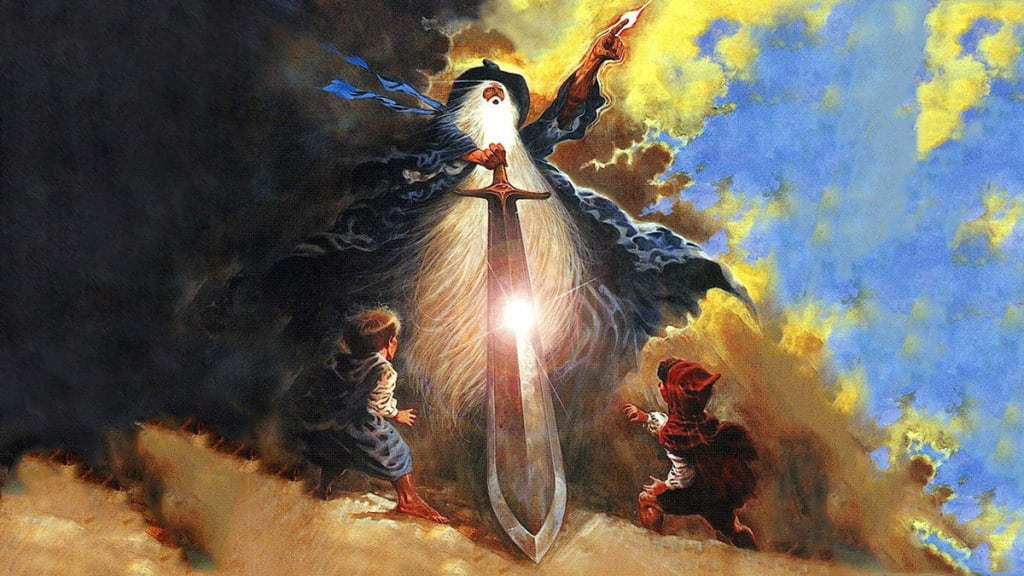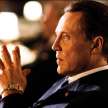Ralph Bakshi's 'Lord of the Rings'
Ralph Bakshi made the transition from reality to mainstream fantasy with the rotoscoped 'Lord of the Rings'.

Long before Peter Jackson transformed Tolkien’s masterpieces into works of cinematic art, there was a hardcore fanbase that seemed to transcend generations. Since its publication in the 1950s, the late J.R.R. Tolkien's fantasy trilogy of Middle Earth, The Lord of the Rings, had been the object of an ever-growing cult following. A perennial favorite of high school and college students including yet undiscovered Ralph Bashki, Rings had been merchandised in poster art and annual calendars, sweatshirts, buttons ("Frodo lives"), and in other related wearable forms. In addition to hardcover and paperback editions of the original texts, numerous critical and cult-oriented ancillary volumes populated the expanded universe. These included histories, guides, and exhaustive interpretations of the trilogy.
The 1977 television season saw the first adaptation of Tolkien for the home screen. Produced by Rankin-Bass for NBC, The Hobbit was the author's first novel of Middle Earth, setting the stage for the action to follow in his subsequent, more sophisticated Lord of the Rings. An amusing, though generally ineffective rendering of the story, the animated TV special suffered from a severe case of cuteness and was received accordingly by the critics. Speculation grew as to whether a theatrical feature film version of the Tolkien trilogy would turn out to be as abortive as The Hobbit.
Lord of the Rings’ Translation to Film

The history of Lord of the Rings translation to film was cloudy and complicated by rumors that had been placed by its production in a half dozen countries and linked it to several major directors. Interest in the trilogy blossomed in the late 1960s, largely because of its inherent mystical qualities. At that time, rumors abounded that the film would be produced by innovative Czech, Hungarian, or Yugoslav animators. In 1970, The New York Times ran a story announcing a production (unrealized) to be directed by John Boorman (Deliverance, Zardoz). Other names linked to the property included Stanley Kubrick (2001: A Space Odyssey, Dr. Strangelove), Walt Disney, and Roman Polanski (Rosemary's Baby, Chinatown). It was with some degree of cynicism, then, that news of Ralph Bakshi's production of Lord of the Rings was received.
A popular animator, Ralph Bakshi's early feature-length cartoons drew heavily on his adolescent experiences in the Jewish-Black-Italian ghetto of Brownsville, Brooklyn. From his theatrical film debut with Fritz the Cat (1972) and following through with Heavy Traffic (1974) and Coonskin (1975), his pictures proved to be animated equivalents of the English "Kitchen Sink" or "Angry Young Man" dramas of the 1950s. Innovative, uncensored, sometimes vulgar but always truthful, Bakshi's works were critically acclaimed as revolutionary examinations of the underbelly of urban society.With Wizards in 1976, Ralph Bakshi made the transition from reality to mainstream fantasy. Derivative but very commercial, the 20th Century-Fox sword and sorcery tale gave him the opportunity to develop his skills in rotoscoping, a process he used extensively in Wizards and exclusively in Lord of the Rings. It's a skill that had been around since the early days of animation. Rotoscoping is simply using live action footage as a guide, to look at and animate over. No one had ever shot an entire movie in live action in order to reproduce it as an animated film. The attempt in Lord of the Rings was to create a moving illustration, not a cartoon. A realistic type of illustrated movie for the first time,

Bakshi described the process as follows, “Editors take the black-and-white footage and remove all the stuff we don't want from it. Everything from unnecessary props to misplaced costume details and forgotten wristwatches. When we're through we have, in effect, a detailed line drawing. Taking that, we simply draw in whatever we want, from facial expressions to additional costume or prop details, add color, and the end product is a fully animated feature film with a very realistic feel to it."
Adapting such a popular subject, Ralph Bakshi had some apprehensions about being accused of misinterpretation. "I've always written my films," he once explained, "This is all new to me. I've never done a film from a novel before. I had to constantly ask, 'How do stay honest to myself as a director and an artist, and at the same time stay honest to the writer of the original material? It was a new problem to me, but I learned how to cope with it." "Tolkien fans," Bakshi said, "could have spent 20 hours in specific areas. One of the great things in Tolkien was how much the Hobbits ate. They ate forever, and the way Tolkien described it, you could sit there and have lunch with them for three days. Tolkien fans and I could sit and do three hours on that and not get past the first act. It wouldn't be fair to ask that of normal movie audiences. We chose those things that we felt the entire audience would like, and perhaps if the film does really well we'll all go to lunch together."
Ralph Bakshi’s Tolkien's daughter

Bakshi's concern for faithfulness to the original text brought him to England with producer Saul Zaentz (One Flew Over the Cuckoo's Nest). Before they started the film, casting English actors to "play" the voice parts that they would later use as the basis for the visual characterizations, Zaentz and Ralph Bakshi visited Tolkien's daughter. She said, 'No matter what you do, ten percent of all Tolkien fans aren't going to like how you design the characters. At ten percent she was being nice. She didn't have to tell me that my interest as a filmmaker is synonymous with my interest as a Tolkien fan. I have the same right to my images as any Tolkien fan. Opinions vary on Ralph Bakshi success at adapting the classic Tolkien material but his presence was felt decades later when Peter Jackson, another fan with his own images embarked on his creative quest. Bakshi opened the door that Peter Jackson walked through, and he will not be the last to make the journey.
About the Creator
Frank White
New Yorker in his forties. His counsel is sought by many, offered to few. Traveled the world in search of answers, but found more questions.





Comments
There are no comments for this story
Be the first to respond and start the conversation.